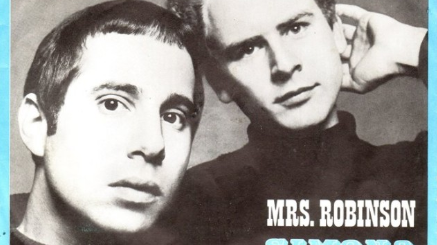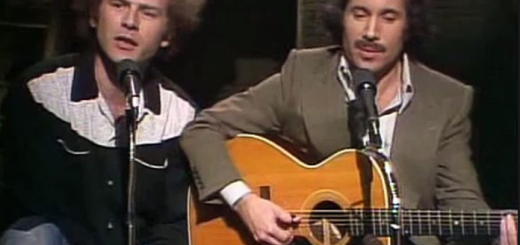Dangling Conversation by Simon & Garfunkel Lyrics Meaning – The Melancholy Weave of Intimacy and Estrangement
Lyrics
Of a now-late afternoon
As the sun shines through the curtained lace
And shadows wash the room
And we sit and drink our coffee
Couched in our indifference, like shells upon the shore
You can hear the ocean roar
In the dangling conversation
And the superficial sighs
The borders of our lives
And you read your Emily Dickinson
And I my Robert Frost
And we note our place with book markers
That measure what we’ve lost
Like a poem poorly written
We are verses out of rhythm
Couplets out of rhyme
In syncopated time
And the dangled conversation
And the superficial sighs
Are the borders of our lives
Yes, we speak of things that matter
With words that must be said
“Can analysis be worthwhile?”
“Is the theater really dead?”
And how the room is softly faded
And I only kiss your shadow, I cannot feel your hand
You’re a stranger now unto me
Lost in the dangling conversation
And the superficial sighs
In the borders of our lives
In a career lauded for its poetic lyricism and gentle acoustics, Simon & Garfunkel’s ‘Dangling Conversation’ stands out as a masterfully crafted expression of emotional detachment and intellectual isolation. The song, which hails from their 1966 album ‘Parsley, Sage, Rosemary and Thyme,’ is a still life painting in sonic form—a depiction of a relationship at its ebbing twilight.
Delving deeper into the lyrics, ‘Dangling Conversation’ is a communication chasm between two lovers, erudite yet emotionally disconnected. This piece goes beyond the surface to explore the song’s intricate layers, discussing the hidden meanings and poignant lines that continue to resonate with generations.
Painting with Words: The Still Life of a Relationship
The opening line sets the stage for a scene that is quietly haunting. A ‘still life watercolor’ encapsulates the stagnancy inherent in the setting of the song—a moment captured, but one devoid of the vitality life requires. It is a vivid metaphor for a relationship that has settled into motionlessness, where the changes in the sunlit room are more dynamic than the interaction between the two characters.
The shadows washing the room become players in this drama, suggesting the presence of something darker creeping into their lives. The use of ‘now-late afternoon’ hints at a waning time, perhaps of the day, or more profoundly, of the dwindling affection in their shared life.
Sipping on Indifference: The Metaphor of Shells and Shores
Simon & Garfunkel use the metaphor of shells upon the shore to describe the protagonists’ emotional state. Much like shells separated from the life-giving ocean, they sit couched in indifference—close yet disconnected from the tides that might stir their souls. This clever analogy suggests a natural detachment and alludes to a vast, uncrossed emotional distance—they can ‘hear the ocean roar’ but are not part of it.
This section of the song also delves into one of the core themes: the ‘dangling conversation’ and ‘superficial sighs’ that mark the borders of their lives. These are the peripheral activities of a relationship where the depth and passion have receded like a tide leaving behind mere remnants of connection.
Literary Lovers Lost in Lines: Dickinson and Frost as Dividers
The two characters within the song find solace in literature, but even their intellectual pursuits highlight the chasm between them—she with Emily Dickinson, he with Robert Frost. Their choice of authors sheds light on their personalities and emotional states. Dickinson’s poetry often explores the inner depths of human emotion, while Frost’s works can be seen as contemplative, yet both solitary ponderings of life and the world.
Further emphasizing their division, they mark their places in these separate worlds with book markers, ‘that measure what we’ve lost.’ It’s not merely a physical placeholder in a book, but a symbolic bookmark of a shared life they no longer recognize or inhabit fully.
A Love Poem Out of Rhyme: The Hidden Meaning
Describing the song as ‘like a poem poorly written,’ the lyrics unveil a hidden meaning: an imperfect and discordant love lacking harmony and flow. ‘Verses out of rhythm’ and ‘couplets out of rhyme’ are not just about the mismatched cadence of poetry but speak to a deeper disharmony between two people who have lost sync with each other, both in communication and in feelings.
By evoking the image of ‘syncopated time,’ the song’s protagonists are out of step, not only with each other but with the life they once shared. They are unable to regain the rhythm they once danced to together, signaling a poignant end to the liaison that once felt like poetry in motion.
Remembering the Resonant Refrain: Reflections on Memorable Lines
‘Can analysis be worthwhile?’ ‘Is the theater really dead?’ These lines are loaded questions, seemingly about culture, but doubling as a metaphor for their relationship. They ponder whether dissecting what remains of their bond would yield any fruit or if their emotional connection, their personal ‘theater,’ has reached its final act.
As one of the song’s most memorable lines casts a shadow of its own—the kiss on her shadow, the missing warmth of her hand—listeners are left with the haunting truth that even in closeness, there is an unfathomable distance. It’s an emotional paradox that cements this song as a timeless classic.







